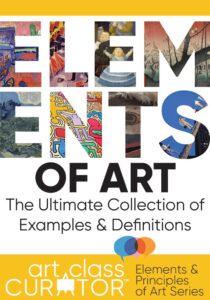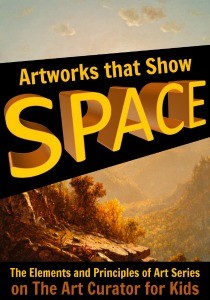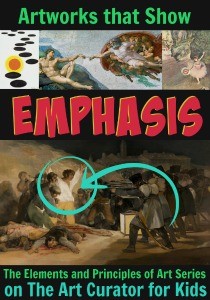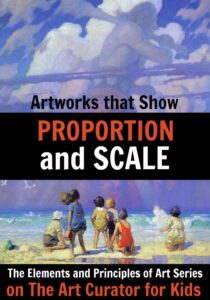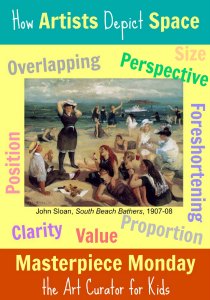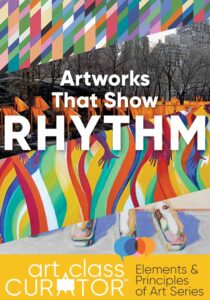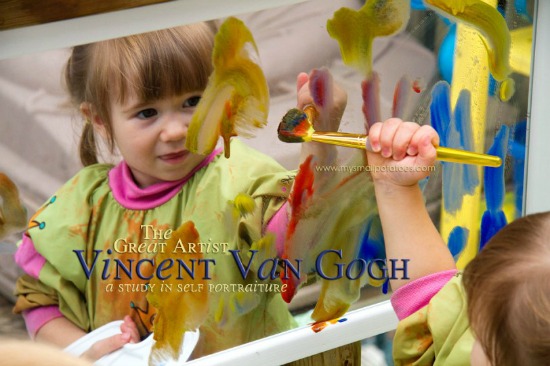Inside: The ultimate collection of rhythm in art examples, including everything from regular to random, plus a rhythm in art definition. A continuation of our Elements and Principles of Art series.

Here are some artworks you can use to teach rhythm in art for your elements and principles of design rhythm lessons. I will add to this list when I find more, so this is a good one to pin or bookmark! The horizontal images do not contain all of the examples.
Download the Free Elements and Principles Printable Pack

This pack of printables was designed to work in a variety of ways in your classroom when teaching the elements and principles of art. You can print and hang in your classroom as posters/anchor charts or you can cut each element and principle of art in its own individual card to use as a lesson manipulative.
Rhythm Art Definition
Rhythm is a principle of design that suggests movement or action. Rhythm is usually achieved through repetition of lines, shapes, colors, and more. It creates a visual tempo in artworks and provides a path for the viewer’s eye to follow.
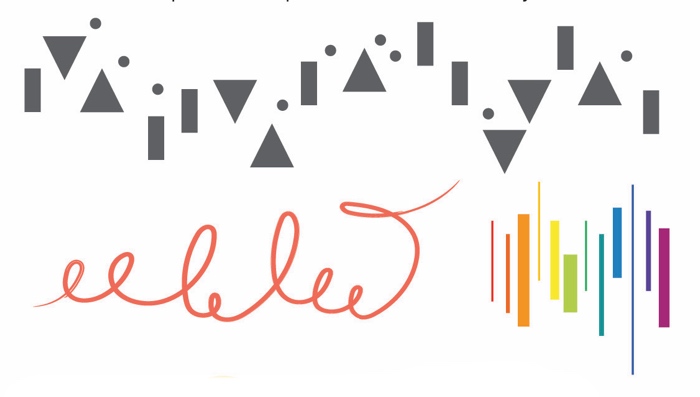
Rhythm in Art Examples

- Jacob Lawrence, Parade, 1960
- André Derain, Charing Cross Bridge, 1906
- Marcel Duchamp, Nude Descending a Staircase (No. 2), 1912
- Gino Severini, Dynamic Hieroglyphic of the Bal Tabarin, 1912
- Marsden Hartley, Indian Composition, 1914-15
- George Tooker, The Subway, 1950
- Martin Puryear, Ladder for Booker T. Washington, 1996
- Grant Wood, American Gothic, 1930
- Alexandra Exter, The Boat and the Town, 1925
- Louise Bourgeois, The Blind Leading the Blind, c. 1947-49
- Albert Renger-Patzsch, Beech Forest in Fall, 1936
Alternating Rhythm
Alternating rhythm describes an artwork that contains a repetition of two or more components that are used interchangeably. Some alternating rhythm examples include alternating light and dark colors or placing various shapes and/or colors in a repeating pattern.

- Henri Matisse, Red Room, 1908
- M.C. Escher, Lizard, 1942
- George Tooker, Government Bureau, 1956
- Frank Lloyd Wright, Interior, Solomon R. Guggenheim Museum
- Robert Delaunay, Endless Rhythm, 1934
- Andy Warhol, Untitled from Marilyn Monroe, 1967 (9 Screen prints)
- Hans Hinterreiter, ME 25 B, 1935
- Bernard Hoyes, Sweeping Ribbons
Random Rhythm
Random rhythm describes an artwork that contains repeating elements without a specified order or arrangement. Some random rhythm examples include splatters of paint or shells on a beach.

- Piet Mondrian, Broadway Boogie Woogie, 1942-3
- René Magritte, Golconde, 1953
- Alexander Calder, International Mobile, 1949
- Bridget Riley, Recollection, 1986
- Mary Martin, Compound Rhythms with Blue, 1966
- Alice Aycock, A Little Cosmic Rhythm, 2007
- Chuck Close, Self Portrait, 2007
- Joan Miro, Rhythmix Characters, 1934
- Jackson Pollock, Autumn Rhythm (Number 30), 1950
Flowing Rhythm
Flowing rhythm describes an artwork that contains curved or circular elements that give the art movement. Some flowing rhythm examples include flowers, clouds, or waves.

- Vincent van Gogh, The Starry Night, 1889 (See: The Starry Night story and lesson)
- Gloria Petyarre, Bush Medicine Dreaming, 2008
- Edvard Munch, The Scream, 1893 (See: The Frieze of Life, Lesson & Project, Visual Analysis Lesson)
- Henri Matisse, The Dance, 1910
- Hans Hokanson, Helixikos Number 3, 1968
- Sonia Delaunay, Electric Prisms, 1914
- Hokusai, The Great Wave, 1829-32
- Gustav Klimt, Portrait of Adele Bloch-Bauer I, 1907
- Bruce Barnbaum, Dance of the Corn Lilies, 1991
- Bruce Barnbaum, Moonrise over Cliffs and Dunes,1992
- Gustav Klimt, Fish Blood, 1897-8
Regular Rhythm
Regular rhythm describes an artwork that contains repeating elements with a specified order or arrangement that can be measured. Some regular rhythm examples include evenly spaced windows or tiles.

- Donald Judd, Untitled, 1969/1982
- Christo and Jeanne-Claude, The Gates, 2005
- Do-Ho Suh, Floor, 1997-2000
- Wayne Thiebaud, Banana Splits, 1964
- Wayne Thiebaud, Nine Jellied Apples, 1963
- Grant Wood, Fall Plowing, 1931
- Andy Warhol, Twenty-Five Colored Marilyns, 1962
- Ferdinand Hodler, Rhythmic landscape on Lake Geneva, 1908
- Marimekko, Hevoskastanja, 2005
- Paul Klee, Pastoral (Rhythms), 1927
Progressive Rhythm
Progressive rhythm describes an artwork that contains repeating elements in a pattern that change either in size or color as they repeat. Some progressive rhythm examples include building blocks arranged from smallest to largest and spirals.

- Victor Vasarely, Alom, 1966
- Marcel Duchamp, Nude Descending a Staircase (No. 2), 1912
- Sydney Opera House
- Hilma af Klint, Altarpiece No. 1, Group X, 1915
- Jasper Johns, Three Flags, 1958
- MC Escher, Smaller and Smaller, 1956
- Wayne Thiebaud, Banana Splits, 1964
- Grant Wood, Fall Plowing, 1931
- Andy Goldsworthy, Carefully broken pebbles scratched white with another stone, 1985
- Bramante Staircase in the Vatican, 1932
In this fun rhythm in art examples video, the differences between pattern, repetition, and rhythm are described and put to music:
Rhythm in Art Resources
- Art Soup Video: Principles of Design: Rhythm
- Horse in Motion & The First Moving Pictures
- Early Photography Inspired Flipbook Project
Remember I will add to this, so don’t forget to pin this post!
Do you have a great example to teach rhythm in art? Share it with me in the comments, and I will add it to the list!
There you have it! The best rhythm in art examples for your elements and principles of art lessons. Want more elements and principles of art teacher resources? Check out the below posts.
